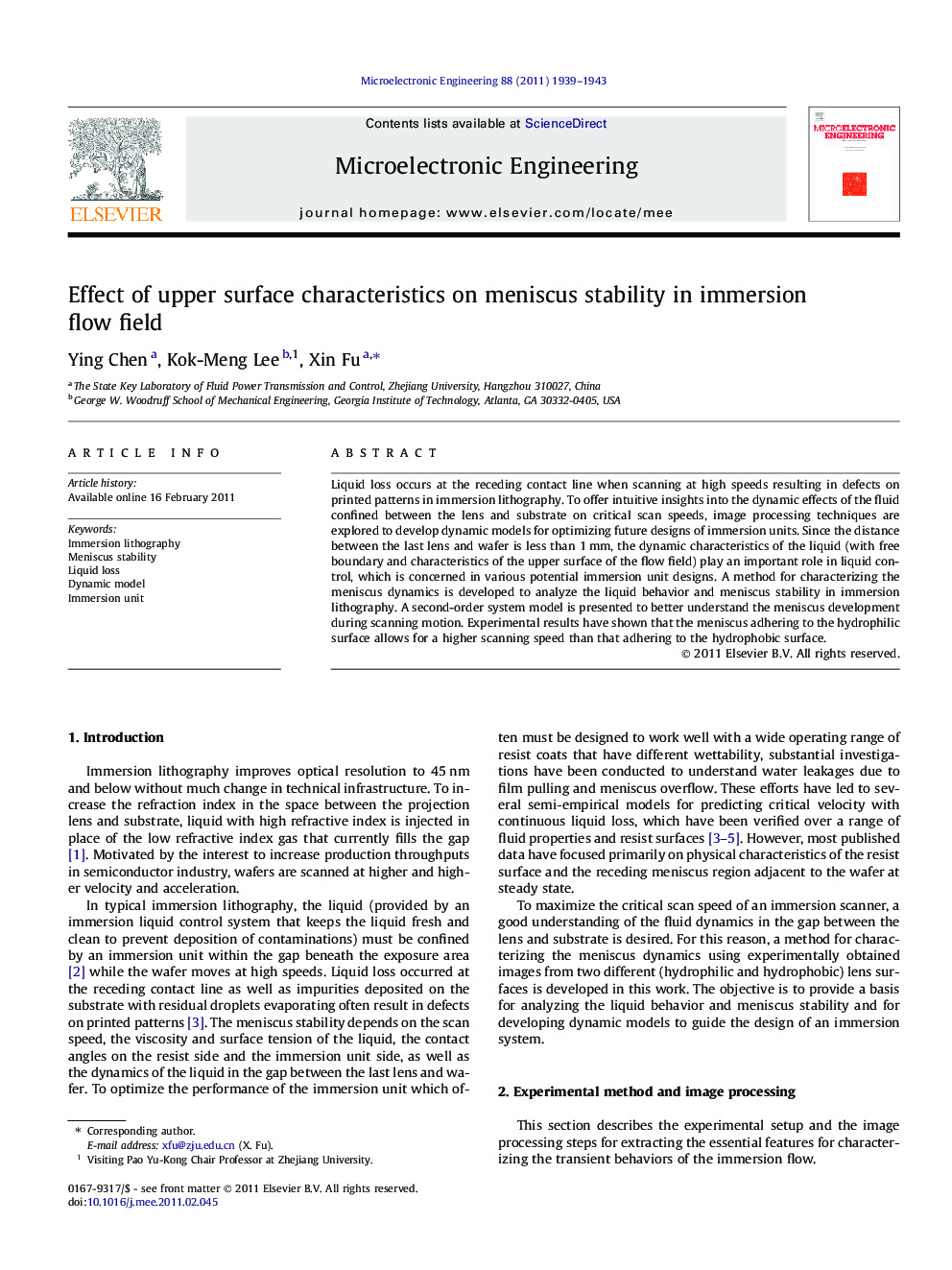| Article ID | Journal | Published Year | Pages | File Type |
|---|---|---|---|---|
| 540416 | Microelectronic Engineering | 2011 | 5 Pages |
Liquid loss occurs at the receding contact line when scanning at high speeds resulting in defects on printed patterns in immersion lithography. To offer intuitive insights into the dynamic effects of the fluid confined between the lens and substrate on critical scan speeds, image processing techniques are explored to develop dynamic models for optimizing future designs of immersion units. Since the distance between the last lens and wafer is less than 1 mm, the dynamic characteristics of the liquid (with free boundary and characteristics of the upper surface of the flow field) play an important role in liquid control, which is concerned in various potential immersion unit designs. A method for characterizing the meniscus dynamics is developed to analyze the liquid behavior and meniscus stability in immersion lithography. A second-order system model is presented to better understand the meniscus development during scanning motion. Experimental results have shown that the meniscus adhering to the hydrophilic surface allows for a higher scanning speed than that adhering to the hydrophobic surface.
